
Forced Convection Oven
Models
DKN302C/402C/412C
DKN602C/612C
DKN812C
DKN912C
Instruction Manual
First Edition
● Thank you for choosing DKN-C series Forced
Convection Ovens from Yamato Scientific Co., Ltd.
● For proper equipment operation, please read and become
thoroughly familiar with this instruction manual before
use. Always keep equipment documentation safe and
close at hand for convenient future reference.
Warning: Read instruction manual warnings and
cautions carefully and completely
before proceeding.
Yamato Scientific America Inc.
Santa Clara,CA
Printed on recycled paper

TABLE OF CONTENTS
1. SAFETY PRECAUTIONS ............................................................ 1
Explanation of Symbols ...................................................................................................................... 1
Symbol Glossary ................................................................................................................................ 2
Warnings & Cautions.......................................................................................................................... 3
Warnings & Cautions.......................................................................................................................... 4
2. PRE-OPERATION PROCEDURES .................................................... 5
Installation Precautions & Preparations ............................................................................................. 5
3. COMPONENT NAMES AND FUNCTIONS ............................................. 10
Main Unit .......................................................................................................................................... 10
Display Characters ........................................................................................................................... 14
4. OPERATION PROCEDURES ........................................................ 16
Operation Modes and Functions ...................................................................................................... 16
Mode & Function Flow ..................................................................................................................... 18
Overheat Prevention Device Setup .................................................................................................. 19
Constant Temperature Mode ............................................................................................................ 20
Constant Temperature + Quick Auto Stop Mode .............................................................................. 21
Auto Stop Mode ............................................................................................................................... 22
Programmed Operation .................................................................................................................... 26
Pattern Repeat Function .................................................................................................................. 31
Program Planning Worksheet .......................................................................................................... 32
Other Functions: Calibration Offset .................................................................................................. 34
Other Functions: Keypad Lock ......................................................................................................... 35
5. HANDLING PRECAUTIONS ........................................................ 36
6. MAINTENANCE PROCEDURES .................................................... 39
Inspection and Maintenance ............................................................................................................ 39
7. EXTENDED STORAGE AND DISPOSAL .............................................. 40
Extended Storage / Unit Disposal .......................................................................................................... 40
Disposal Considerations .................................................................................................................. 40
8. ERROR CODES ................................................................... 41
Reading Error Codes ....................................................................................................................... 41
Troubleshooting Guide ..................................................................................................................... 42
9. SERVICE & REPAIR ............................................................... 43
10. SPECIFICATIONS ................................................................ 44
11. WIRING DIAGRAM ............................................................... 46
DKN302C/402C/602C ...................................................................................................................... 46
DKN412C/612C ............................................................................................................................... 47
DKN812C ......................................................................................................................................... 48
DKN912C ......................................................................................................................................... 49
12. REPLACEMENT PARTS LIST ...................................................... 50
13. HAZARDOUS SUBSTANCES LIST ................................................. 52

1
1. SAFETY PRECAUTIONS
Explanation of Symbols
A Word Regarding Symbols
Various symbols are provided throughout this text and on equipment to ensure
safe operation. Failure to comprehend the operational hazards and risks
associated with these symbols may lead to adverse results as explained
below. Become thoroughly familiar with all symbols and their meanings by
carefully reading the following text regarding symbols before proceeding
Warning
Caution
Signifies a situation which may result in minor injury (Note 2)
and/or property damage (Note 3.)
(Note 1) Serious injury is defined as bodily wounds, electrocution, bone
breaks/fractures or poisoning, which may cause debilitation requiring
extended hospitalization and/or outpatient treatment.
(Note 2) Minor injury is defined as bodily wounds or electrocution, which will not
require extended hospitalization or outpatient treatment.
(Note 3) Property damage is defined as damage to facilities, equipment, buildings or
other property.
Symbol Meanings
Signifies warning or caution.
Specific explanation will follow symbol.
Signifiies restriction.
Specific restrictions will follow symbol.
Signifies an action or actions which operator must undertake.
Specific instructions will follow symbol.
Signifies a situation which may result in serious
injury or death (Note 1.)

2
1. SAFETY PRECAUTIONS
Symbol Glossary
WARNING
General Warning
Danger!: High
Voltage
Danger!:
Extremely Hot
Danger!: Moving
Parts
Danger!:
Blast Hazard
CAUTION
General Caution
Caution:
Shock Hazard!
Caution:
Burn Hazard!
Caution: Do Not
Heat Without
Water!
Caution: May
Leak Water!
Caution:
Water Only
Caution: Toxic
Chemicals
RESTRICTION
General
Restriction
No Open Flame
Do Not
Disassemble
Do Not Touch
ACTION
General Action
Required
Connect Ground
Wire
Level Installation
Disconnect Power
Inspect
Regularly

3
1. SAFETY PRECAUTIONS
Warnings & Cautions
Warning
NEVER operate equipment near combustible gases/fumes
Do not install or operate DKN-C series unit near flammable or explosive gases/fumes. Unit is
NOT fire or blast resistant. Negligent use could cause a fire or explosion.
See “List of Hazardous Substances” (P.52)
ALWAYS ground equipment
Always ground equipment properly to avoid electric shock.
DO NOT operate equipment when abnormalites are detected
In the event that smoke or any unusual odor begins emitting from unit, or if any other abnormalities
are detected, terminate operation immediately, turn off main power switch (Main Circuit Breaker
- “MCB”) and disconnect power cable. Continued operation under such conditions may result in
fire or electric shock.
DO NOT operate equipment with power cable bundled or tangled
Operating unit with the power cable bundled or otherwise tangled, may cause power cable to
overheat and/or catch fire.
DO NOT damage power cable
Damaging the power cable by forcibly bending, pulling or twisting may cause fire or electric shock
to the operator.
NEVER process explosive or combustible substances
Attempting to process/use explosive or combustible substances in/near unit may cause explosion
or fire. See “List of Hazardous Substances” (P.52)
DO NOT touch hot surfaces.
Some surfaces on this unit become extremely hot during operation. Exercise vigilance in order to
avoid getting burned.
NEVER disassemble or modify the equipment
Attempting to dismantle or modify unit in any way, may cause malfunction, fire or electric shock.
DO NOT insert multiple power cables into a single outlet
Inserting multiple cords into a single outlet, using branch outlets or extension cords, may cause
power cable to overheat and/or catch fire. Other issues may include a drop in voltage, which may
affect performance, resulting in failure to control or maintain proper temperature.

4
1. SAFETY PRECAUTIONS
Warnings & Cautions
Caution
Moving unit to install location
Always carry unit to install location using cargo handling equipment, such as a forklift. Unit casters
(DKN812C/912C only) are intended only to facilitate short-distance maneuvering at installation site.
Do not roll unit over extended distances on casters. Damage to the casters may result.
DO NOT operate equipment during thunderstorms
In the event of a thunderstorm, terminate operation and turn off main circuit breaker (MCB)
immediately. A direct lightning strike may cause damage to equipment, or result in fire or electric
shock.

5
2. PRE-OPERATION PROCEDURES
Installation Precautions & Preparations
Warning
1. Ground wire MUST be connected properly
DKN302C/DKN402C/DKN602C models are rated for 115V AC power supply.
・ Ground wire must be connected to a proper grounding line or teminal in order to prevent
electric shock.
・ Never connect ground wire to gas lines or water pipes.
・ Never connect ground wire to telephone grounding lines or to lightning conductor rods.
Doing so may result in fire or electrical shock.
・ Never insert multiple plugs into a single outlet. Doing so may result in power cable
overheating, fire or drop in voltage.
Connect power cable to grounded outlet!
・ DKN412C/612C/812C/912C models are rated for 220V AC power supply. Before
connecting these models, confirm facility power supply is set up to properly deliver required
voltage supply.
2. Choose an appropriate installation site
DO NOT install unit:
・ where installation surface is not completely level, not even or not clean.
・ where flammable or corrosive gases/fumes may be present.
・ where external temperature will exceed 35ºC, will fall below 5ºC or will fluctuate.
・ in excessively humid or dusty locations.
・ where there is constant vibration.
・ where power supply is unstable or erratic.
・ in direct sunlight or outdoors.
Install DKN-C series unit in a location with sufficient space, as specified as below.
DKN302C/402C/412C/602C/612C are equipped with exhaust ports in top panel
.DKN812C/912C are equipped with exhaust ports in rear panel. Be sure these ports
remain unobstructed with adequate space to disspate outgoing heat.
w
G
Grounding prong
Grounded plug

6
2. PRE-OPERATION PROCEDURES
Installation Precautions & Preparations
Warning
3. Install in a location free of flammables and explosives
Never install near flammables or explosives of any kind. This unit is NOT fire or blast resistant.
Simply switching the main circuit breaker (MCB) “ON” or “OFF” can produce a spark, which can
then be relayed during operation, causing a fire or explosion when near flammable or explosive
fluids, chemicals or gases/fumes. See “List of Hazardous Substances” (P.52)
Never process explosive or flammable substances in unit. Fire or explosion, causing serious
injury or death may result. See “Hazardous Substances List (P.52) for more information on
these substances.

7
2. PRE-OPERATION PROCEDURES
Installation Precautions & Preparations
Warning
4. Never disassemble or modify
5. Install on a level surface
Never attempt to disassemble or modifiy
this unit. Doing so may cause equipment
malfunction, fire or electric shock.
Install unit on level and even surface.
Failure to do so may cause abnormal
vibrations or noise, resulting in possible
complications and/or malfunction.
6. Do not overload chamber racks
7.Space test samples appropriately
Maximum load for unit racks is 15kg
each, when load is evenly distributed.
Place items as evenly and as far apart
as possible and do not exceed
maximum load rating.
Bunching items together to get more onto a
rack may prevent proper temperature
control. As a rule of thumb, use
approximately 70% of entire rack space or
less, when placing items, to ensure better
temperature control accuracy.
Test
Samples
Rack
1
5
k
g
Max. Load 15kg

8
2. PRE-OPERATION PROCEDURES
Installation Precautions & Preparations
CAUTION
8. Connect to a proper power source
● Use a dedicated power supply that matches electrical capacity.
Electric capacity: DKN302C 115V AC 8.5 A (MCB capacity 20A)
DKN402C 115V AC 12.5A (MCB capacity 20A)
DKN602C 115V AC 14A (MCB capacity 20A)
DKN412C 220V AC 6.5A (MCB capacity 20A)
DKN612C 220V AC 7A (MCB capacity 20A)
DKN812C 220V AC 12.5A (MCB capacity 20A)
DKN912C 220V AC 15.5A (MCB capacity 20A)
Connecting multiple cables to an outlet or using a branch outlet or extension cord will cause
voltage to drop, leading to degraded temperature control, and in extreme cases, overheating or
fire.
Be advised that maximum operating temperature (DKN302C/402C/602C/412C/612C/812C -
260°C, DKN912C - 210°C) may not be reached under low external temperatures, if source
voltage is below 115V (DKN302C/402C/602C) / 220V (DKN412C/612C/812C/912C).
9. Secure unit on installation surface
● Unit may tip over or fall, causing injury or death during an earthquake or other unforseen
incident. Be sure to stabilize unit properly (adjustable leveling feet securely positioned,
etc.) to assure safe operation and a safe work area.
Be sure casters are locked in place on DKN812C/912C models.
Install supplied caster holders (DKN812C/912C only) as shown below:
10. Initial operation
When operating for the first time some, some atypical odors may emit from unit which are the
result of burn-off from heat insulation, bonding material, etc., and is normal. These odors will
subside with further use.

9
2. PRE-OPERATION PROCEDURES
Installation Precautions & Preparations
CAUTION
11. Chamber rack and test sample placement
Chamber rack capacity differs by model. Number of supplied racks is 2-8.
Bottom-most rack (two for DKN912C) is secured by screws. All other racks may be placed
as desired.
Unit heater is located direclty under diffuser panel (chamber floor), causing this surface to be
higher in temperature than all other interior surfaces. Placing sample items directly on diffuser
panel may cause samples to be damaged, burned or catch fire. To minimize fire and safety
hazards, do not remove these screws and leave bottom-most rack secured in place.
12. Handle power cable with care
● Never operate this unit with power cable bundled or tangled; and do not modifiy, bend,
forcibly twist or pull on power cable. Doing so may cause fire and/or electrical shock.
● Do not risk damage to power cable by positioning it under desks or chairs, or by allowing
it to be pinched between objects. Doing so may cause fire and/or electrical shock.
● Do not place power cable near kerosene/electric heaters or other heat-generating devices.
Doing so may cause power cable insulation to overheat, melt and/or catch fire, which may
result in electric shock.
● Turn off main circuit breaker (MCB) immediately and disconnect from facility terminal or
outlet, if power cable becomes partially severed or damaged in any way.
Failure to do so may result in fire or electric shock.
Contact a local dealer or Yamato sales office for information about replacing power cable
if it becomes damaged.
● Always connect power cable to appropriate facility outlet or terminal.

13
3. COMPONENT NAMES AND FUNCTIONS
Main Unit
No.
Panel Item
Description
1
RUN/STOP Key
Press to start or stop an operation.
2
Up/Down Arrow Keys
Press repeatedly to increase or decrease setting value incrementally.
Press and hold to increase or decrease setting value perpetually.
3
ENTER Key
Press to finalize setting.
4
FIXED TEMP Key
Press to select FIXED TEMPERATURE mode.
5
TIMER Key
Press to select timed operation. Quick Auto Stop, Auto Stop or Auto Start
modes may be selected.
6
PROGRAM Key
Press to begin creating programs or to select programmed operation.
3 programs with a total of 6 patterns may be set. (See P.25)
7
SUBMENU Key
Press to enter overheat prevention temp setting, calibration offset, keypad lock,
and program repeat menus.
8
HEATER Indicator Lamp
Illuminates when heater is on and drawing power.
9
ALARM Indicator Lamp
Illuminates when an error occurs (accompanying alarm tone sounds).
10
AUTO STOP Indicator
Lamp
Illuminates while Auto Stop operation is in progress. Flashes while setting Quick
Auto Stop or Auto Stop modes.
11
AUTO START Indicator
Lamp
Illuminates while Auto Start operation is in progress. Flashes while setting.
12
FIXED TEMP Indicator
Lamp
Illuminates while Fixed Temperature operation is in progress. Flashes while
setting.
13
PROGRAM Indicator Lamp
Illuminates while Programmed operation is in progress. Flashes while setting.
14
Main Display
(Temp reading display)
Shows current chamber temperature, setting characters and error information.
15
Subdisplay
(Temp setting display)
Shows temperature setting, timer setting and remaining time.
16
Overheat Prevention
Display
Shows overheat prevention temperature limit setting.
17
Main Circuit Breaker
(MCB)
Flip up or down to turn unit ON or OFF respectively.
*

14
3. COMPONENT NAMES AND FUNCTIONS
Display Characters
All characters displayed when making settings and during operation are defined as follows:
Character
Identifier
Description
Purpose
Fix
Signifies constant
temperature
setting mode
Appears while entering settings for
constant temperature operation.
Sv
Signifies temperature
setting mode
Appears while entering temperature
settings.
AStP
Signifies auto stop and
quick auto stop setting
mode
Appears while entering settings for
quick auto stop or auto stop mode.
AStr
Signifies auto start
setting mode
Appears while entering settings for
auto start mode.
tim
Signifies timer setting
mode
Appears while entering timer
settings.
PrG3
Signifies which program
is being set
Appears when selecting which
program to use (1, 2 or 3) See
“Programmed Operation” (P.26)
PAt
Signifies program
pattern
Appears when selecting a program
pattern. See “Programmed
Operation” (P.26)
End
Signifies end of a timed
operation
Appears when a timed operation is
completed. See pgs. 19~23
Sv-1
Signifies which step
temperature is being set
Appears while setting temperature
for each step in a program. (Sv-1 to
Sv-30)
t-1
Signifies which step
timer is being set
Appears while setting timer for each
step in a program. (t-1 to t-30)
PS-3
Signifies what step is to
be repeated
Appears when selecting step
numbers to be repeated in a program.
See “Pattern Repeat Function” (P.31)
Pc-2
Signifies number of
times to repeat
Appears when setting the number of
times to repeat steps in a program.
See “Pattern Repeat Function” (P.31)

15
3. COMPONENT NAMES AND FUNCTIONS
Display Characters
Character
Identifier
Description
Purpose
cAL
Signifies calibration
offset setting mode
Appears while entering offset
temperature values. See “Calibration
Offset” (P.34)
oH
Signifies overheat
prevention setting mode
Appears while setting activation
temperature for overheat prevention
device. See “Overheat Prevetion
Device Setup” (P.19)
Lock
Signifies that keypad is
locked
Appears while control panel keypad is
locked. See “Keypad Lock” (P.35)

16
4. OPERATION PROCEDURES
Operation Modes and Functions
Operation modes for this unit are defined in the table below:
N
o.
Name
Description
Page
1
Constant Temperature
Mode
Pressing the FIXED TEMP key brings up constant
temperature setup mode.
The "▲▼" keys are used to set temperature.
Pressing the RUN/STOP key initiates or terminates
operation.
20
2
Quick Auto Stop
Mode
This mode is used to automatically terminate an operation
when a specified time period has passed (decided during
operation).
This is done by pressing the TIMER key at any time during
constant temperature operation.
The "▲▼" keys are used to set the timer.
Pressing the RUN/STOP key begins operation in quick auto
stop mode, activates the timer (once temp setting is
reached) and automatically terminates operation when
timer reaches 0:00.
21
3
Auto Stop Mode
This mode is used to automatically terminate an operation
when a specified time period has passed (decided before
operation).
Pressing the TIMER key displays "AStp".
The temperature (Sv) is set by pressing the ENTER key.
The operation time (tim) is set by pressing ENTER again.
Pressing the RUN/STOP key begins operation in auto stop
mode. Operation automatically terminates when timer
reaches 0:00.
22
4
Auto Start Mode
This operation is used to automatically begin an operation
after a specified period has passed.
Pressing the TIMER key displays "AStr".
The temperature (SV) is set by pressing the ENTER key.
The operation time (tim) is set by pressing ENTER again.
Pressing the RUN/STOP key begins operation in auto start
mode.
24
5
Programmed Operation
This operation is used to run a combination of modes, times
and temperatures as one operation.
Pressing the PROGRAM key displays "PrG1".
Press it again to select program mode.
Press the ENTER key to select the pattern (Pat). Press the
ENTER key to display "End". Enter the number of patterns
to be used.
Enter step temperatures and step times for "Sv_x" and "t_x"
respectively (where “x” stands for a number or value).
26
* It is not possible to change modes during operation. If a mode change is required, operation must
be terminated and a new mode of operation must be set.

17
4. OPERATION PROCEDURES
Operation Modes and Functions
Operation functions for this unit are defined in the table below:
№
Name
Description
Page
1
Overheat
prevention
Auto
overheat
prevention
This function is set to automatically activate (auto reset)
when chamber temperature exceeds the temperature
setting by 12°C.
19
Overheat
prevention
device
Although this device uses the same power source,
display, and keypad as the control panel, it has an
independent temperature monitoring circuit, CPU, sensor
and output circuit. An overheat prevention temperature
can be manually specified using the control panel.
Unit operation is terminated when device is activated.
Operation may be restarted when the main circuit breaker
(MCB) is switched off (wait 5 seconds), then back on
again (manual reset).
2
Calibration offset
Calibration offset function is to compensate for differences
in the temperature reading (as taken by unit sensor) and
actual chamber temperature (as taken manually with a
thermograph). Unit can be offset to either the positive or
negative side of temperature line for entire temperature
range of unit
34
3
Overheat prevention
temperature calibration
function
The temperature specified for the overheat prevention
device is automatically recalibrated when temperature
reading is corrected with the calibration offset function.
-
4
Power failure recovery
Unit can begin operation again with the same settings (in
memory) as before the power failure occured. Simply
press the START/STOP key to begin the operation over from
the beginning.
-
5
Keypad lock
This function locks all keys (except SUBMENU and
START/STOP) during operation.
Lock function is set or cancelled using the SUBMENU key.
35
Page is loading ...
Page is loading ...
Page is loading ...
Page is loading ...
Page is loading ...
Page is loading ...
Page is loading ...
Page is loading ...
Page is loading ...
Page is loading ...
Page is loading ...
Page is loading ...
Page is loading ...
Page is loading ...
Page is loading ...
Page is loading ...
Page is loading ...
Page is loading ...
Page is loading ...
Page is loading ...
Page is loading ...
Page is loading ...
Page is loading ...
Page is loading ...
Page is loading ...
Page is loading ...
Page is loading ...
Page is loading ...
Page is loading ...
Page is loading ...
Page is loading ...
Page is loading ...
Page is loading ...
Page is loading ...
Page is loading ...
Page is loading ...
-
 1
1
-
 2
2
-
 3
3
-
 4
4
-
 5
5
-
 6
6
-
 7
7
-
 8
8
-
 9
9
-
 10
10
-
 11
11
-
 12
12
-
 13
13
-
 14
14
-
 15
15
-
 16
16
-
 17
17
-
 18
18
-
 19
19
-
 20
20
-
 21
21
-
 22
22
-
 23
23
-
 24
24
-
 25
25
-
 26
26
-
 27
27
-
 28
28
-
 29
29
-
 30
30
-
 31
31
-
 32
32
-
 33
33
-
 34
34
-
 35
35
-
 36
36
-
 37
37
-
 38
38
-
 39
39
-
 40
40
-
 41
41
-
 42
42
-
 43
43
-
 44
44
-
 45
45
-
 46
46
-
 47
47
-
 48
48
-
 49
49
-
 50
50
-
 51
51
-
 52
52
-
 53
53
-
 54
54
-
 55
55
-
 56
56
Yamato DKN602C User manual
- Type
- User manual
Ask a question and I''ll find the answer in the document
Finding information in a document is now easier with AI
Related papers
-
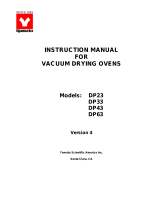 Yamato Scientific DP23/33/43/63 Operating instructions
Yamato Scientific DP23/33/43/63 Operating instructions
-
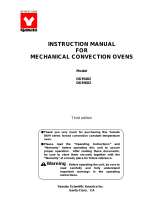 Yamato Scientific DKM400/600 Operating instructions
Yamato Scientific DKM400/600 Operating instructions
-
 Yamato Scientific DX402 User manual
Yamato Scientific DX402 User manual
-
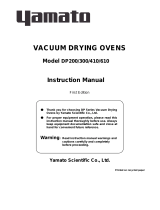 Yamato Scientific DP200/300/410/610 Operating instructions
Yamato Scientific DP200/300/410/610 Operating instructions
-
 Yamato Scientific ICL300A/300B/310A/310B Operating instructions
Yamato Scientific ICL300A/300B/310A/310B Operating instructions
-
Yamato Scientific BO400/410 Operating instructions
-
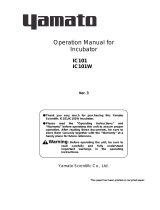 Yamato Scientific IC101/100W Operating instructions
Yamato Scientific IC101/100W Operating instructions
-
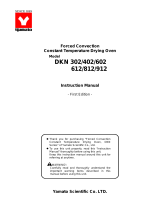 Yamato Scientific DKN 912 User manual
Yamato Scientific DKN 912 User manual
-
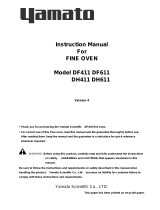 Yamato Scientific DF411/611 Operating instructions
Yamato Scientific DF411/611 Operating instructions
-
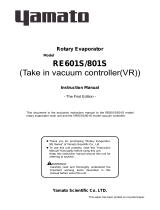 Yamato Scientific RE601S/801S Operating instructions
Yamato Scientific RE601S/801S Operating instructions
Other documents
-
Supermicro AOC-S3216L-L16iT User manual
-
SWIFT Motorhome Owners Service Manual
-
Gledhill ElectraMate 2000 12kW Owner's manual
-
MCE Motion 3000ES 42-02-E001 B9 User manual
-
Mitsubishi Electric FR-XC User manual
-
Trane TR 20REG-DB Installation guide
-
Gledhill GulfStream A-Class Owner's manual
-
Star Trac Pro Tread AC 7700 User manual
-
Vacon VACON® NXP GridConvert ARFIFF03V133 User guide
-
Vacon NXP Grid Converter User guide




































































